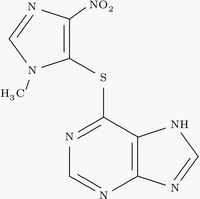Anti-CD20 Monoclonal Antibody (Rituximab) in the Treatment of Pemphigus
Arin MJ, et al. Br J Dermatol. 2005;153:620-625.
Summary
The authors present a series of 5 patients with recalcitrant pemphigus, treated with anti-CD20 monoclonal antibody (rituximab), to assess efficacy of this drug in this patient population. Four patients with pemphigus vulgaris and 1 patient with pemphigus foliaceous were enrolled. All patients were stated to have recalcitrant disease, defined as having active lesions despite treatment with the equivalent of greater than 10 mg of prednisolone daily and azathioprine 2 to 2.5 mg/kg daily, or immunosuppression that was equivalent. Patients were given intravenous infusions of 375 mg/[m.sup.2] of rituximab once a week for 4 weeks. Assessments occurred at weekly intervals for the first month, every 2 weeks for the second month, and then monthly. At each assessment, the patients' skin and mucous membranes were examined. In addition, several blood tests were serially drawn including antibody titers to desmoglein 1 and 3, indirect immunofluorescence, and peripheral blood B cell count. The latter was determined by using flow cytometry to evaluate the number of CD19+ B cells. The authors state that estimate of CD20 is "impaired" when rituximab is circulating in the plasma so they looked at CD19+ B cells, as CD19 is a pan-B cell marker. Primary outcome measures included resolution of mucocutaneous lesions, a decrease in the corticosteroid dose to below 7.5 mg of prednisolone daily, and the length of remission. Complete response was defined as no clinically active disease for at least 8 weeks within 1 year after treatment with rituximab. Partial response included patients with a reduction in active lesions by at least 50% of the initial body area of involvement. Minimal response included patients with a reduction in active lesions by less than 50%. Of the 5 patients treated with rituximab, 3 were complete responders and 2 were partial responders. Of the 3 complete responders, I had no evidence of clinical disease at 18 months post-treatment and required no supplemental medication. Another had no disease at 24 months post-treatment, requiring only 500 mg of mycophenolate mofetil daily. The third had no disease at 36 months post-treatment, needing only 1 mg of prednisolone daily. The partial responders were classified as having "minor disease flares" during a 10-month observation period after rituximab treatment. However, both patients were able to decrease the dosages of immunosuppressive therapy post-treatment compared with treatment at the time of rituximab infusion. Through serial monitoring of CD19+ B cell counts, a correlation was noted between improvement of disease and a decrease in the number of these cells. No serious adverse events were noted in any of the treated patients.
Comment
The authors present a series of patients with recalcitrant pemphigus who were treated with rituximab. Given the rarity of these diseases, the sample size is relatively adequate, though it is important to note that one of the patients had previously been reported in an article published in the British Journal of Dermatology in 2003. The results are difficult to interpret from the data presented in this article. Information regarding the treatment regimen of each patient is listed in a chart within the article, indicating regimens only at the time of rituximab infusion and then "current treatment." It does not delineate the time point after rituximab infusion that immunosuppressive treatment was reduced. In addition, the reader must speculate as to the treatment regimen prior to rituximab infusion. Also, time of response to treatment is only addressed graphically and graph curves for some of the patients seem to already be decreasing prior to rituximab infusion. As rituximab does not appear to have a quick onset of action and since patients were also on concomitant immunosuppressive therapy, it is difficult to assess what role if any rituximab had in the remission of lesions in these patients. Perhaps a longer course of immunosuppressive therapy was more important in clearing lesions than rituximab. Lastly, the criteria used for refractory disease in this article is by no means standardized, considering the lower limit of daily corticosteroid use was required to be only 10 mg for patients to be labeled as refractory. Rituximab may be of benefit in the treatment of pemphigus, but it is difficult to state this from how the data is presented in this article. Further studies are needed to evaluate its efficacy, clearly delineating pretreatment regimens and history of immunosuppressive therapy, changes in treatment regimens, and the time course of these changes.
COPYRIGHT 2005 Journal of Drugs in Dermatology, Inc.
COPYRIGHT 2005 Gale Group



